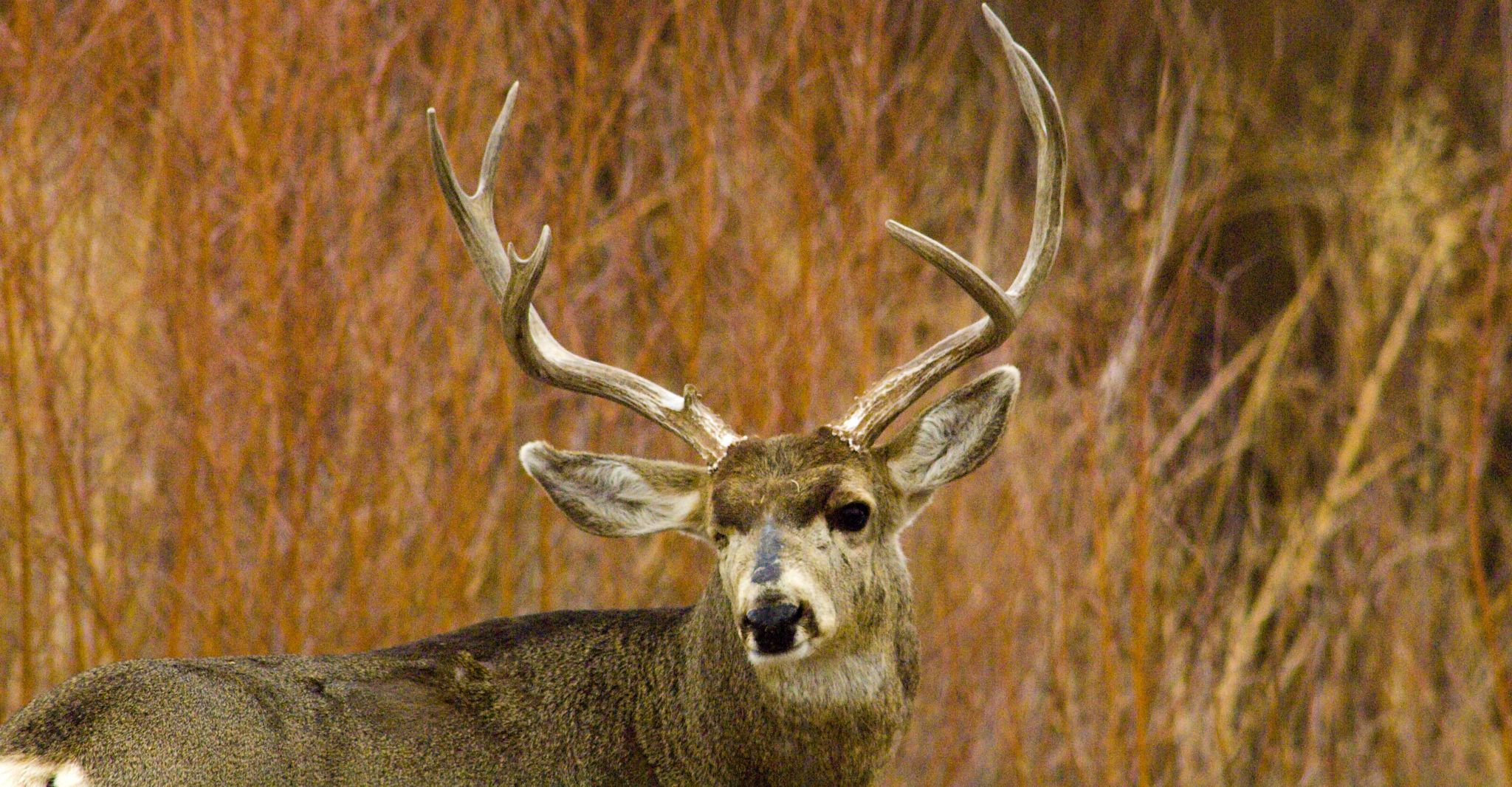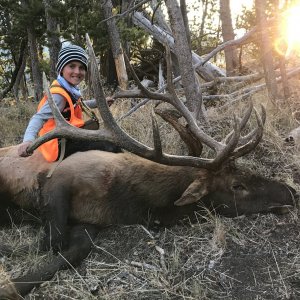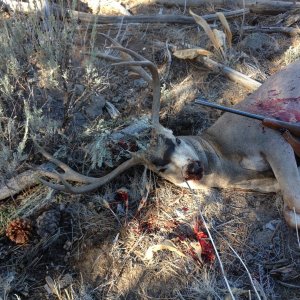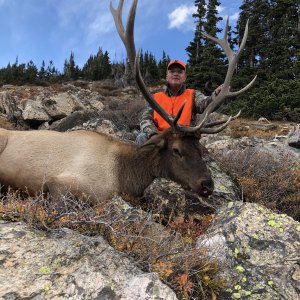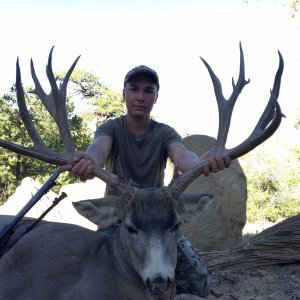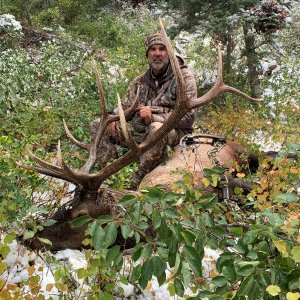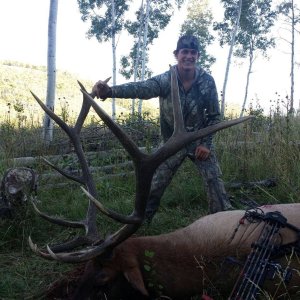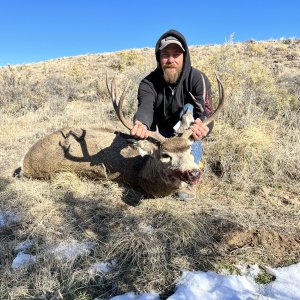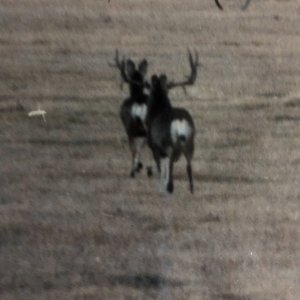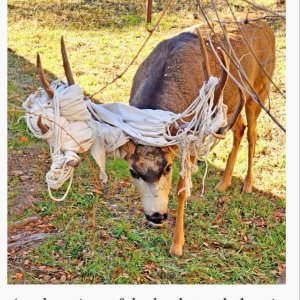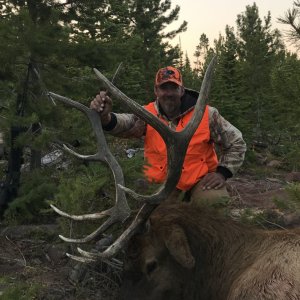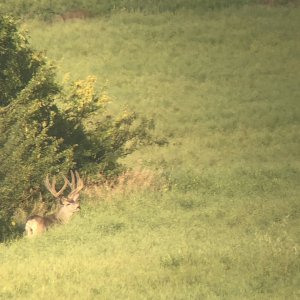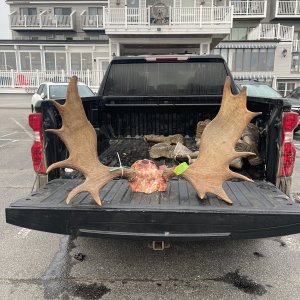Here is an excerpt from a paper shared with me by Gary Fralick. I think it is a pretty good source of info from APR results. I have the whole document if anyone knows or cares to look at it, let me know how I can share it.
There is also a table in another paper he sent me that compares age vs outside width:
View attachment 124772
This portion is only regarding APRs historically in multiple states:
USE OF ANTLER POINT REGULATIONS FOR MULE DEER BY STATE
COLORADO - Colorado implemented antler point restrictions for mule deer on a statewide basis for six years, and for a seven year period in a number of Game Management Units (GMU). These seasons resulted in a shift of hunting pressure on all age classes of bucks (primarily yearlings) to bucks ≥2. Colorado documented a marked increase in illegal or accidental harvest of yearling bucks during this period. The number and ratio of mature bucks did not increase during these 6 or 7 year periods.
IDAHO - Idaho implemented ≤2 point seasons (combined with limited quota seasons for bucks with ≥3 points) to reduce hunting pressure on older bucks and improve post-season total buck:doe ratios. Over the long term, these ≤2 point APR seasons did not improve total buck:doe post-season ratios. However, there were temporary (2-4 years) improvements in post-season adult buck ratios following initiation of this type of APR. Following several consecutive years of increased general pressure solely on yearling males, adult buck ratios returned to pre-
treatment (or worse) levels in the face of this regulation. This reduction of adult bucks following several years of increased pressure on yearlings was the result of dramatically reduced
recruitment of yearlings into the adult buck classes.
Idaho also used a ≥4 point season in big game management unit 73 in the early 2000s in an effort to reduce hunter participation and crowding in this area. The regulation was strongly backed by the public and resulted in increased total buck:doe ratios. However, following several years of APR use, the public became concerned about increasing number of large adult males with 3 point antlers. Complaints about hunter crowding remained during APR use and the area was eventually converted to an “unlimited controlled hunt structure” (hunters selecting to hunt in this area are precluded from hunting in other “general” areas, but “permits” were not limited) in an effort to limit hunter participation.
UTAH - Utah used both ≥3 and ≥4 point over a number of years in numerous GMUs. The Utah Division of Wildlife abandoned mule deer APRs after five years due to significant (>35%) illegal harvest of yearling males, reduced total harvest, reduced hunter participation, shifting hunter distribution, and a reduction in harvestable mature bucks.
MONTANA – Montana has used APR seasons that protect both adult males (≤2 points only legal for a portion of the general season) and seasons that protect yearlings. In the former seasons, results were similar to those in Idaho; a temporary increase in mature bucks followed by a return to pre-APR ratios. Conversely, attempts to increase the number of mature bucks and total buck:doe ratios using ≥4 point seasons in Montana reduced total buck harvest by 28%, and increased illegal harvest of bucks with ≤3 points by nearly 40%. However, harvest of legal bucks having ≥4 points increased when compared to areas without APR, but personnel believed this was unsustainable. Montana personnel suggested this season structure could be detrimental to total buck ratios in areas with limited mule deer security habitats (e.g. areas with extensive road networks).
WASHINGTON - Washington used APRs in select units for mule deer, black-tailed deer, and/or white-tailed deer (WDFW 2010). During APR use, which they continue to employ in select units, Washington experienced a smaller total harvest of mule deer bucks, a switch in some harvest from mule deer to white-tailed deer, and no increase in the number of mature mule
deer bucks. They did experience an increase in total buck:doe ratios as the result of lower total mule deer buck harvest. However, fawn recruitment in these areas also increased at this same time due to improved precipitation and habitat, complicating the analysis. WDFW concludes in their analyses that APRs work to increase buck “escapement” from harvest when combined with short season length.
OREGON – Oregon used an APR regulation for mule deer for a number of consecutive years in the popular Steens Mountain herd, and other wildlife management units. ODFW abandoned this regulation when both the number of older bucks and total buck:doe ratios decreased following 12 consecutive years of APR (≥4 point). They documented significant illegal harvest of bucks ≤3 points and a reduction of 30% of bucks ≥4 points observed following the hunting season. Additionally, legal harvest declined by over 50%. Since APRs did not achieve public desires for more and larger bucks, Oregon has since moved to limited quota to
meet post-season buck ratio management objectives in these areas (ODFW 2003).

